Jewelry CAD Design: Unlocking Creativity and Precision in Jewelry Making
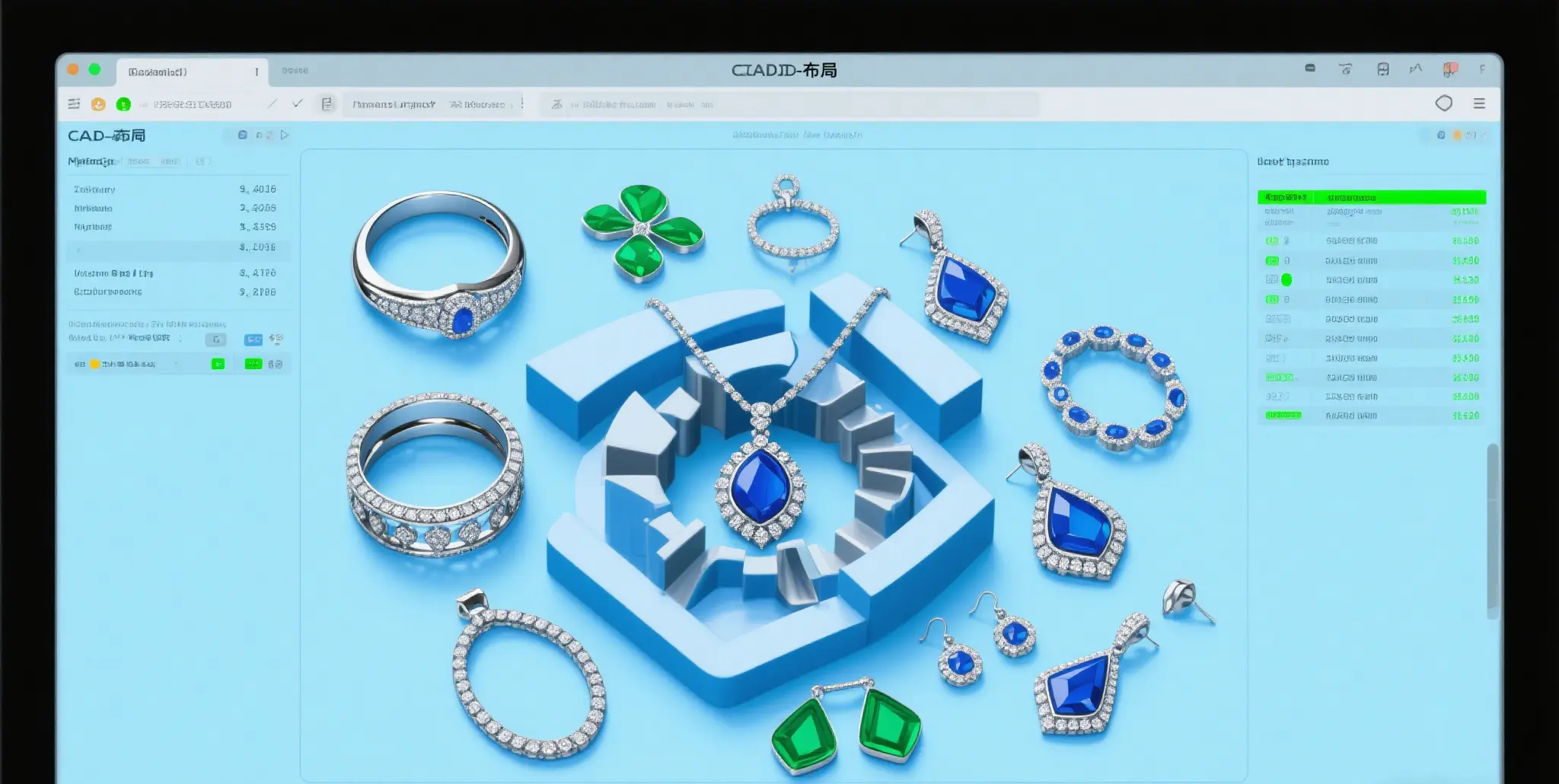
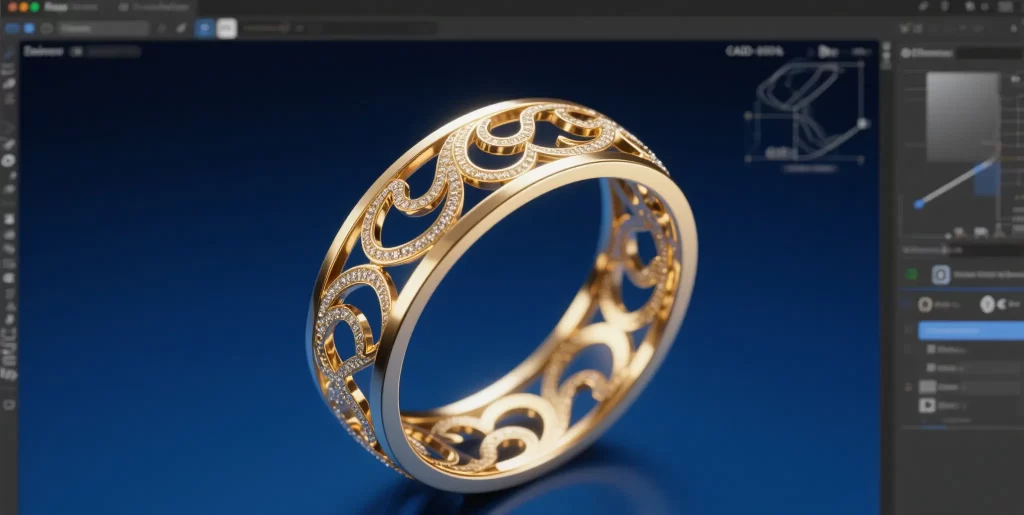
Key Takeaways
- Jewelry CAD software has revolutionized the art of jewelry design, offering designers a new realm of precision, complexity, and customization through digital tools.
- Utilizing CAD technology shortens the design-to-production process, creating a faster, more efficient process, often with significant reduction in material waste.
- Designers are able to play with intricate designs and get perfect symmetry. With great CAD tools, they can quickly, easily and effectively iterate on their ideas.
- Mastering jewelry CAD tools is essential for staying competitive in today’s market, with many learning resources and community support available online.
- Familiarizing yourself with CAD (design) and CAM (manufacturing) functions goes a long way to making sure you have a smooth workflow from initial concept to finished piece.
- Disruptive technologies such as 3D printing and artificial intelligence offer unprecedented possibilities to innovate. In addition, they advance sustainable practices in jewelry design.
Jewelry CAD design is the technical process of using advanced computer software to create highly detailed digital representations of rings, necklaces, and other precious creations.
The primary reasons most jewelers in the U.S. Adopt CAD are precision and speed. Using CAD tools, makers can easily adjust shapes and dimensions, test configurations, and identify potential problems before creating anything physical.
It’s no surprise that shops from LA to NY have adopted CAD in order to stay relevant and on-trend. Then, flip through to discover how CAD is changing the process of creating new jewelry.
What is Jewelry CAD Software?
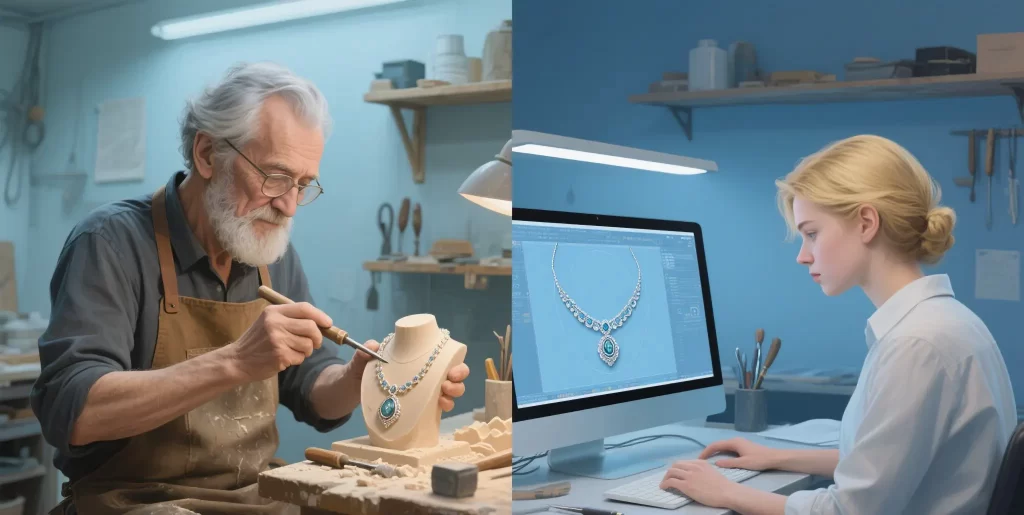
Jewelry CAD software is a specialized digital tool used to create, develop, and refine intricate jewelry designs within an immersive, three-dimensional environment. It allows designers to sketch, adjust and perfect 3D representations of a ring, necklace or bracelet before producing anything physical.
This approach moves away from the traditional hand-drawn sketch and introduces an unprecedented level of precision and command over the design process. Today, jewelry CAD is a major component in the way most new pieces begin their lives. Designers in the U.S. Around the world use it to develop and vet their concepts.
They present their ideas with much greater precision than paper and pencil could ever manage.
Digital Crafting: A New Era
Transitioning from hand tools and paper to screens represents a profound change in jewelry design. InCADible CAD software cuts creative time in half. With a few clicks, a designer can experiment with new shapes or modify a setting.
This is a major advantage in large urban markets such as Los Angeles, where customers demand quick turnaround on their new designs. The combination of digital tools allows unprecedented levels of creativity. They enable the production of intricate designs, like filigree or personalized engravings, that are difficult to sketch manually.
In reality, CAD opens the door to more creative work. It allows designers to experiment with forms and finishes that were previously impossible.
Beyond Paper: CAD’s Magic
Beyond Paper — CAD’s Magic Jewelry CAD software takes 2D sketches and turns them into reality in 3D. With photorealistic rendering capabilities, clients can preview what a finished piece will look like before it’s ever produced.
Modifications are a breeze—shift a gem, rework a curve, or experiment with a different finish. Because files can be easily saved, shared, or sent directly to 3D printers, this significantly reduces waste and saves time.
To businesses like HonHo Jewelry Manufacturer, based in China, it means quicker turnarounds on custom orders and less unexpected changes in final jewelry pieces.
Core Ideas for Aspiring Designers
Aspiring designers must learn CAD fundamentals to compete in today’s marketplace. Figuring out how to model, render, and save files has become the new job requirement.
With CAD tools, anyone can begin with a basic concept and develop it into a complete, production-ready design. It has become a basic expectation of the industry, and being proficient in it can give any designer a leg up on the competition.
Unlock Amazing Jewelry CAD Benefits
Computer aided design, or CAD, has revolutionized the way jewelry designers create and conceptualize intricate designs. CAD is an acronym for computer-aided design. It’s packed with powerful tools and features that make it easier for newbies and veterans alike to bring their designs to life.
To put it simply, CAD has revolutionized the way we create jewelry by making it more intelligent, efficient, and imaginative. Utilizing CAD is more than an option or a fad—it’s a necessity both in the United States and around the globe. This is a basic skill for most jewelry makers from Los Angeles to New York.
That’s why many of the world’s leading manufacturers have adopted it as well. Myth #1 This section discusses the tangible, proven benefits of CAD. It saves time, reduces waste, and gives designers the freedom to experiment with new concepts more easily!
1. Sculpt Intricate Details Easily
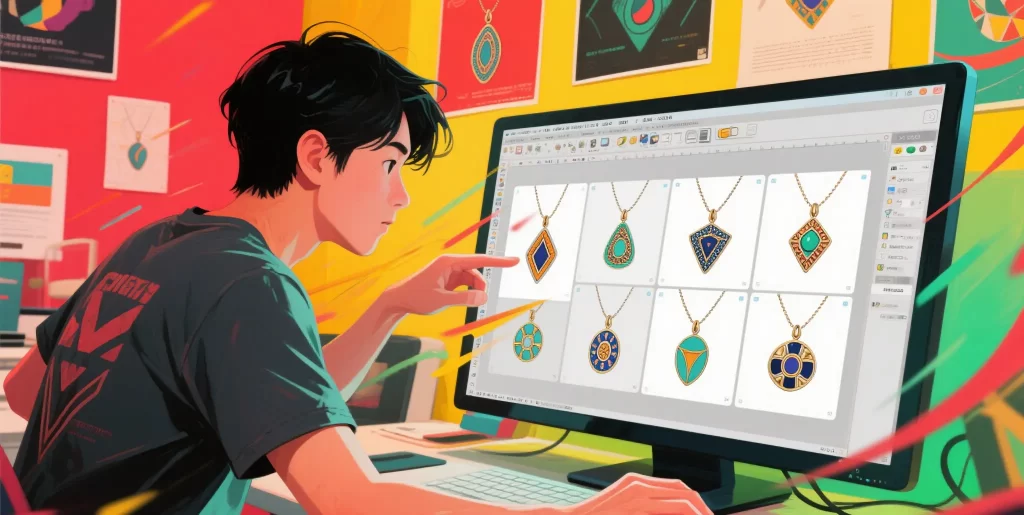
CAD software provides designers the ability to easily model intricate, elaborate features that would be extremely difficult to achieve manually. Whether you want to make even the slightest modification, this is all possible without having to go back to square one.
For instance, if a designer wants to insert delicate filigree designs, it takes only a few clicks to do so. They can even make your stone setting adjustments a breeze! This kind of intricacy is hard to achieve with classic wax carving.
It is significantly more time-consuming and provides little-to-no flexibility for modifications. Digital sculpting provides you with an unprecedented level of control and allows everyone to review every angle in great detail. Advanced features such as mesh smoothing and surface tools allow designers to create distinct shapes and textures.
This enables you to create striking designs that make an impression in a competitive marketplace.
2. Achieve Flawless Symmetry Always
Symmetry is a key element of aesthetic perfection in jewelry design. CAD tools, especially those found in professional jewelry CAD software, come equipped with features that automatically maintain symmetry and uniformity within your design. Users can automatically mirror sections, align parts with precision, and leverage grid snapping to ensure perfect symmetry.
The same goes for rings, necklaces or even charm bracelets. Working by hand, attaining flawless symmetry was a challenge. The task required a sure touch—and years of skill.
CAD simplifies the process greatly, allowing even novice designers to verify and correct symmetry during the jewelry designing process. This is especially important for items that need to interlock, such as wedding bands or adjustable clasps.
3. Iterate Designs at Lightning Speed
Perhaps one of the most compelling aspects of CAD is the speed at which users can test out new concepts. Rather than having to carve a new wax block for every modification, a designer can save multiple versions in just minutes.
This rapid iteration allows designers to explore alternative shapes, patterns, or sizes without the frustrating wait times. It further empowers teams to rapidly share concepts and make adjustments based on input.
If a customer wants to see three styles of the same pendant, it takes less time to produce each mockup. Quick modifications translate into less back and forth and a quicker turnaround from concept to completed design.
4. See Your Vision in 3D
Having the opportunity to see a design in three dimensions before creating it is a fantastic benefit of CAD. Designers can rotate, zoom, and inspect every inch of a digital CAD model. This goes a long way towards identifying potential errors at an early stage.
Imagine having a prong that extends too far or a stone that is too recessed! Whether on-screen or printed, rendered images are great tools for presenting to clients and showing them what they can expect their final piece to look like.
In fact, some tools allow designers to incorporate realistic materials and lighting to create a photorealistic appearance. This is an incredible boon for custom jobs! Customers now have a way to see their ideas come to life before you put money into precious metals.
5. Personalize Pieces Like Never Before
With CAD, designers can easily make unique, custom jewelry tailored to the individual’s preferences. Whether designers are editing text, replacing a stone, or adding a new custom symbol, it takes just a few simple adjustments.
This is considerably more difficult and time consuming using traditional techniques. Jewelry customers today are looking for pieces that express their story. With CAD, a jeweler can get a request for a unique piece such as a birthstone ring, engraved locket, or nameplate necklace.
This degree of custom work is a huge selling point. At HonHo Jewelry Manufacturer based in China, the staff designs beautiful pieces of jewelry. They further specialize in customizing non-tarnish, waterproof jewelry with materials including brass, stainless steel, and 925 silver.
They design with CAD so that all their gold vermeil and gold-filled jewelry can be produced meeting each buyer’s desire for personalization.
6. Cut Material Waste Smartly
Material costs make up a large percentage of jewelry costs. CAD allows careful planning of every job to minimize the use of metal and stones. With jewelry CAD layout tools, designers can quickly nest shapes together and eliminate most of the scraps.
This leads to less waste and cost, which is impactful for small studios and large factories alike. Smart planning is good for the planet, too, by reducing the need for new raw material.
Cutting down on errors results in less rework and less precious metal lost. Many CAD tools can generate a report outlining how much material you need to complete the job. This capability is incredibly helpful when it comes to budgeting and ordering replications.
7. Streamline Your Making Process
Instead, CAD software centralizes every design process step to one, easy-to-access location. From initial design to completed production mold, all parts come together seamlessly. This allows for greater transparency to monitor design changes and share completed files among colleagues.
Without CAD, workflows involve a lot more back-and-forth. With CAD, workflows are much faster and smoother. With a click a designer can send any file directly to the 3D printer or casting team.
Such an arrangement reduces the potential for mistakes and oversights. The entire productive process becomes easier to see and understand, increasing speed along with quality.
8. Test Durability Before Casting
Testing a design’s strength before casting it prevents wasted time and effort. CAD enables users to conduct virtual tests to see how an item will wear in the real world. For instance, a ring shank can be tested for weak points or areas of thinness that are likely to fracture.
This is crucial for high-end or everyday-wear jewelry, where quality is paramount. By identifying issues in the beginning, designers are able to address them before investing in costly materials like gold, silver, or gems.
9. Craft Unique, Complex Shapes
Certain designs are virtually unachievable without CAD. CAD allows for more organic, fluid shapes and textures. Designers are free to experiment with contorted circles, tubular loops, or composite forms that appear thoroughly contemporary and yet timeless.
With more advanced modeling tools, your craziest concept can easily be transformed into a tangible work. In this competitive climate, a unique aesthetic is an enormous advantage.
10. Unleash Your Creative Spirit
Jewelry CAD provides designers with an entire toolbox to experiment and push boundaries. There are less restrictions on the shape, size, or amount of detail. It allows people to experiment with new ideas and concepts and figure out what works, sharing files with one another or collaborating online.
This ensures that innovative fresh new looks get to market, and the industry continues to thrive and expand. Creativity and skill go hand-in-hand. CAD allows designers to create quickly enough to stay ahead of trends and client requests.
CAD vs. CAM: Jewelry Roles
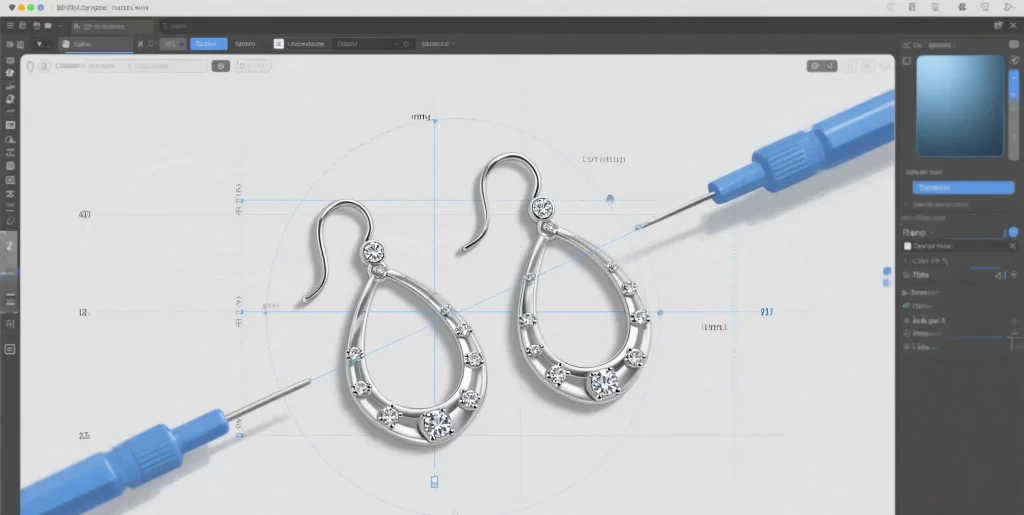
CAD and CAM have connected but distinct roles in jewelry creation. CAD is short for computer-aided design. It’s where artists begin to make their ideas a reality by creating digital 3D models of those concepts. CAM, or computer-aided manufacturing, is the step where these digital designs are transformed into tangible, physical jewelry.
Getting a grasp on how each works is imperative. It benefits everybody who’s looking to make exceptional pieces that really sing in today’s market.
CAD: The Design Blueprint
The production process begins with CAD, much like you’d draw a map before heading on a long journey. Designers utilize sophisticated software to construct each element of a creation in a virtual environment. With CAD it’s much easier to make adjustments to the smallest of details or see if your stone will fit properly.
Designs that would have taken weeks to produce by hand now might take days or even hours. CAD is very precise, very much governed by math and logic, so every line and curve obeys some rigid regulations. This can stifle the production of additional, more “artisan” designs.
Some believe CAD lacks the little quirks that make traditional pieces so special. Yet, it allows designers to test the boundaries of creativity and develop audacious, intricate designs.
CAM: Bringing Designs to Life
This is where CAM technology really gets to shine. Machines like CNC mills or 3D printers follow the CAD file’s instructions to shape metal or wax. CAM speeds up the process to achieve repeatable results with close quality specifications.
Every step, from cutting to casting, depends on how clean and precise the CAD file is. The process is extremely efficient, but critics claim that it is incapable of reproducing the nuance of a skilled metalsmith’s touch.
How They Create Together
While CAD and CAM can be used independently, their true value lies in teamwork. Ongoing communication between designers and makers helps maintain high quality standards. Most jewelers will combine CAD/CAM with handfinishing to introduce some character.
Understanding what CAM is capable of allows designers to create plans that will be successful in real-world applications.
Pick Your Ideal Jewelry CAD Tool
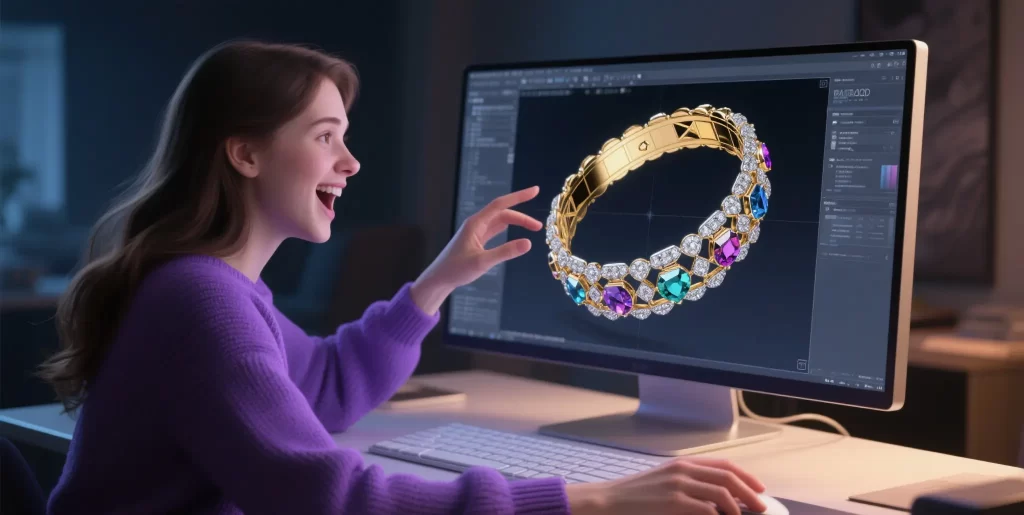
Picking your ideal jewelry CAD tool requires a combination of foresight, investigation, and clear-eyed reflection on your current and future design pipeline. One tool does not suit all designers. Some are more ideal for beginners, others are more ideal for advanced users, or large collaborative teams.
It is useful to consider what you require today and what you’ll need tomorrow, or in five and ten years. Tools that can grow with you will save you time and money in the long run. Most designers prefer private demos—they provide a true taste of the software before you commit to it.
Must-Have Features for Jewelers
Robust modeling tools, fast rendering, and the ability to import hand-drawn sketches or vector files are key features provided by good jewelry CAD software. Find programs with freehand drawing capabilities and the option to use plugins, if applicable.
A user-friendly interface goes a long way – that’s important not just for a showroom, but for everyday work. No CAD software is perfect, and fast tech support and learning resources are critical in that first year when most users will require the most assistance.
For 2D work, it’s important that the software allows easy sketching and importing.
Match Software to Your Style
Some tools are better suited for forms that are organic and flowing, while others are better for crisp, geometric edges. Make sure the tool meshes with other technology you utilize, such as rendering add-ons or other operating systems.
Similar flexibility to design custom pieces on demand is shown by HonHo Jewelry Manufacturer. They have a strong focus on waterproof and non-tarnish varieties for stainless steel, brass, and silver.
Free Tools vs. Pro Software
Free tools are great for learning and doing basic work. Paid options provide more robust features, frequent software updates, and enhanced customer support.
Consider both your budget and your current level of expertise. Paid tools often require additional plugins, increasing the overall cost but enhancing the capabilities.
The Power of Parametric Design
Parametric modeling allows you to quickly adjust designs—resize a ring or replace a gem with the click of a button. This makes edits faster and allows you to experiment with new ideas.
For jewelers, this translates to significantly quicker turnaround times and the ability to make changes on the fly to better accommodate client requests.
Mastering Jewel CAD Design
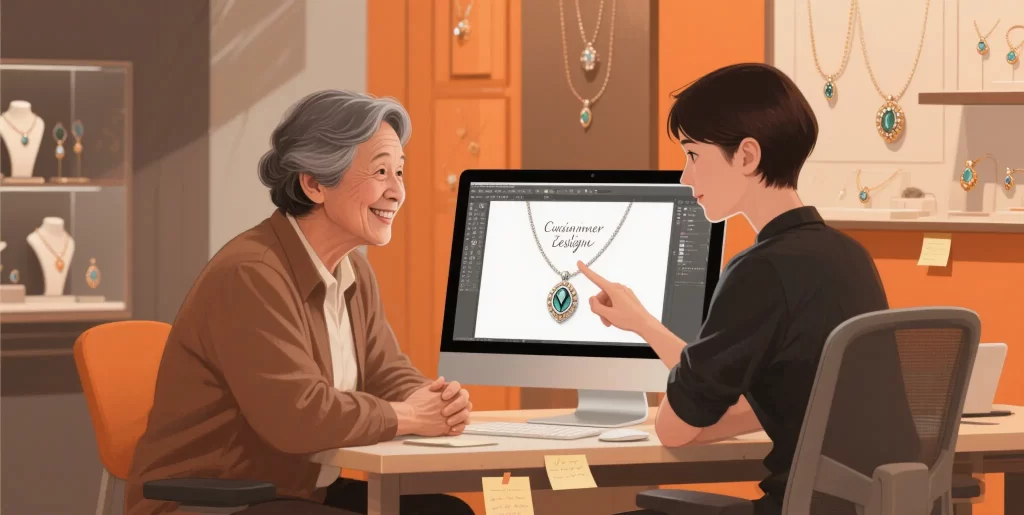
Getting proficient at jewel CAD design requires more than an investment in new software. Software platforms such as RhinoGold or MatrixGold allow designers to customize quickly and accurately. They help you to create studio quality pieces in gold, silver and all varieties of stones.
These programs are extensive, and it often takes years to fully master them. The time spent learning this process directly correlates to the quality of the output. The learning process never ends, as CAD technology is ever-changing.
With regular updates and new features being released frequently, keeping skills fresh is crucial. Familiarity with the fundamentals—for example, setting a stone or measuring a shank—help to ease the transition into digital tools. Designers who continue to work at it gain speed and proficiency the more they work.
Navigating the Learning Curve
We know getting started with jewelry CAD can be a challenge. The screen may seem busy, and the available tools may seem like an endless list of options. Even tiny incremental changes go a long way.
Quick projects and frequent exercises help provide low-hanging fruit to continue developing skills. Free online tutorials and videos can help demystify complicated steps. Participating in these online groups opens up a wealth of advice and guidance from more experienced designers.
From Bench Skills to Digital
Going from the workbench to the digital screen is a complete transition. Yet, practical skills are crucial, too. Understanding how metals can bend or how stones might fit goes a long way in creating a successful CAD model.
Combining traditional skills with new technology results in more powerful and innovative designs.
Top Learning Resources Online
Websites such as Coursera, Skillshare, and even Youtube provide crash course tutorials to help you get started. Communities on platforms such as Reddit or Facebook groups allow designers to exchange tips and critiques.
Exploring various courses and tutorials provides a broader perspective of what course content can be created.
Beat Common Beginner Blocks
Others get tripped up on minutiae or lagging laptops while using jewelry design software. Making large tasks manageable by dividing them into smaller steps is effective, especially in the jewelry design process.
Practice: Your Path to Pro
The truth is that consistent practice using professional jewelry design software is the only way to improve. Personal projects not only hone skill, but feedback from fellow jewelry designers keeps designs on the cutting edge.
CAD in Today’s Jewelry World
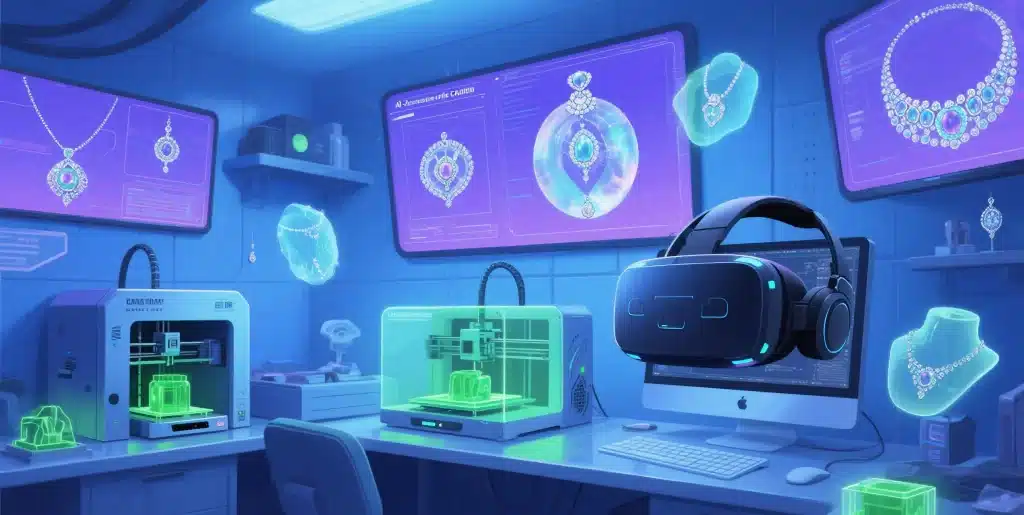
The CAD technologies radically shifted the landscape of how jewelers operate in today’s world. In fact, since the latter half of the 20th century, the use of CAD has skyrocketed in today’s jewelry market.
Today, jewelers have access to powerful software tools such as Rhino Pro, Matrix and Zbrush to sketch and create highly complex designs to the most acute detail. These tools not only assist beginners, but advanced designers. They allow you to shift techniques from hand work—setting a stone by hand, polishing a piece—directly into a digital realm.
Adapting CAD from mass industry production to shimmery fine jewelry creation was no small feat! Today, software accommodates these intricate nuances beautifully.
3D Printing: Idea to Object
3D printers take your ideas from digital files to actual pieces. Through CAD, a jeweler can create a design and view it immediately on screen, then print out a physical model in no time flat.
That quick turnaround allows you to prototype fits or get a sense of how a final ring might look before committing to complete production. You can adjust the shape or scale quickly, easily reducing time and expense.
Today, more designers are looking at 3D printing to expand the limits of production, creating forms and geometries that would otherwise be difficult to achieve manually.
Designing for Eco-Friendly Making
Utilizing CAD allows you to design with less waste. You can design every section down to only using what you actually need to use.
That translates to less scrap metal and stones. It’s an opportunity to experiment with sustainable materials or sustainable methods of production.
With an ever-increasing number of brands working toward green making, CAD clearly and easily allows for the transition.
Simplify Complex Gem Settings
CAD software can simplify planning out some of the most complex gem settings, including channel, prong, or micropave settings. You’ll get to see how stones will fit and hold before you even set them.
This mastering, if not level of detail, protects these stones with beauty and brilliance.
Integrate Detailed Metalwork Art
When using CAD, integrating intricate metalwork art is simple to accomplish. You can integrate detailed metalwork art—twists, filigree, or geometric patterns—directly into the design.
With the computer’s assistance, you can achieve every detail perfectly, creating a final piece that aligns with your original vision.
Meeting Modern Production Needs
Speed and order CAD has revolutionized the process and organization of today’s jewelry fabricators. You produce more, at a lower cost—and with less waste.
Companies such as HonHo Jewelry Manufacturer in China already use these tools to design bespoke jewelry. Based on Sailor, they produce dazzling, water-resistant creations in stainless steel, brass and 925 silver.
Keeping up to date with CAD increases your competitive advantage in a crowded marketplace.
Future Glimpse: Jewel CAD Tech
Jewelry CAD design advances rapidly as new technology continues to emerge. This combination of 3D printing, AR and VR is truly revolutionizing the day-to-day operations of jewelers. With these tools it is simpler to create custom, unique pieces, with greater precision and decreased trial and error.
By using computer-aided design, designers can create forms and structures with mathematical precision that were previously challenging to accomplish manually. This highlights shapes and contours that seem at once sculptural and organic. The global 3D printing market for jewelry was roughly $1.5 billion in 2020 and continues to expand.
Japan is taking the lead, introducing new, improved 3D printers and materials into shops around the world. AR and VR have made it possible for anyone to view 3D models from every angle prior to a piece being created. This translates to reduced surprises and a much more seamless design process.
AI Shaping Jewelry Designs
AI is enriching the jewelry design process through CAD. Likewise, it assists in identifying patterns of consumer preferences and introduces new inspiration and creativity. Other tools today provide design suggestions or generate preliminary designs based on just a few specifications.
This increases creativity and reduces the amount of time required to create revisions. To create or reflect current fashion trends, AI can assist in matching trends or even imagining forms that no one has ever attempted before. Designers armed with these tools at their disposal will be better equipped to discover new avenues of differentiation.
Smarter Digital Prototyping
Our digital prototypes are much more precise today. These advancements in CAD not only save time, they greatly reduce the likelihood of errors and wasted metal. With 3D printing, you can hold an actual model in your hands before you go into large-scale production of the real deal.
This saves costs and improves efficiency. Our new digital prototyping tools identify weak points or unusual shapes, allowing corrections early on, when they are less costly to implement.
What’s Next for Design Tools
Technology is going to continue to evolve, and jewelry design tools will evolve as well. With generative design, you can define parameters, such as budget or footprint, and receive thousands of concepts in parallel.
Staying receptive to these changes is essential for any designer looking to stay ahead of the curve. Actually being open and prepared to learning new tools is what will keep them ahead.
Quick and Reliable Services
Jewelry CAD design is fast and reliable, just like us. With digital tools, modifications are able to be made instantaneously, allowing jewelers or clients to see updates immediately. A jewelry manufacturer in Los Angeles can email a CAD file to a retailer in New York within minutes.
Now, the client is able to give feedback the very same day! This short feedback loop reduces the time between wait time and alert and aids in future planning. Some shops even boast that they can provide turnarounds in as little as 3 days for a 3D model or rendering.
Whether they’re using cloud storage or shared drives, files circulate quickly and are kept secure. This process results in less communication back and forth, less chance of error, and ultimately just a much quicker and easier journey from concept to completed custom design.
Conclusion
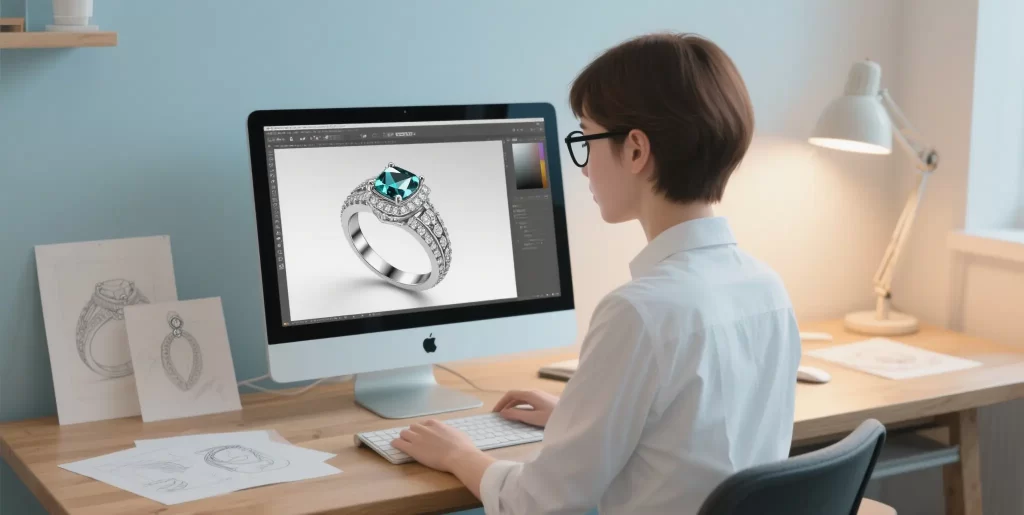
Jewelry CAD design has completely transformed the way jewelers operate in the U.S. Jewelry stores in LA and NYC use these resources to design cutting-edge rings. They excel at making elegant bangles and crazy one-of-a-kind bib necklaces.
CAD allows jewelers to work more quickly, minimize scrap, and communicate ideas more effectively to clients. Now anyone can view photo realistic renders long before the first piece of metal is cut and a gem set.
Today, many shops are learning and adopting these skills in order to remain at the forefront of changing tastes and increased demand. Tech continues to advance, and every day we see further integration of hand work and CAD into the studio. Looking to make a statement or create your own unique style?
Once you enter the world of CAD, you’ll be amazed at the creations you can produce. Have an outlandish concept, or just curious to find out more? It’s not too late, so get in touch and request.
Frequently Asked Questions
What is jewelry CAD design?
Jewelry CAD design utilizes specialized jewelry design software to create highly accurate digital prototypes of jewelry. This powerful design capability allows jewelry designers to visualize and modify intricate pieces, ensuring precision and imaginative expression throughout the jewelry designing process.
How does CAD benefit jewelry designers?
With CAD jewelry design software, jewelry designers can produce pieces in less time, easily make specific alterations to existing designs, and realize elaborate designs that are difficult to achieve manually, enhancing the digital jewelry design experience.
What is the difference between CAD and CAM in jewelry making?
CAD, or Computer-Aided Design, is essential in the jewelry industry for creating two or three-dimensional models, while CAM, or Computer-Aided Manufacturing, utilizes these digital jewelry designs to control machines that produce exceptional jewelry pieces.
Can beginners use jewelry CAD software?
Can beginners use jewelry design software? This way, beginners can start creating simple jewelry models and learn advanced features as they gain more experience.
Why is CAD important for custom jewelry in Los Angeles?
Like we said, Los Angeles is the home of all trendsetting styles. CAD programs enable local jewelry designers to quickly create custom jewelry designs, meeting the high standards and fast pace of LA’s jewelry industry.
What features should I look for in jewelry CAD software?
Consider features such as 3D modeling and photorealistic rendering in professional jewelry design software, along with tools for stone setting and mounting. Additionally, integration with 3D printing processes and comprehensive support ensures a successful jewelry design experience.
What’s the future of CAD in jewelry design?
If CAD technology is changing quickly, look forward to more lifelike 3D jewelry models! Expect to see these features, along with integration with virtual reality and better tools for developing custom jewelry design and sustainable jewelry in the next few years.
Related Posts
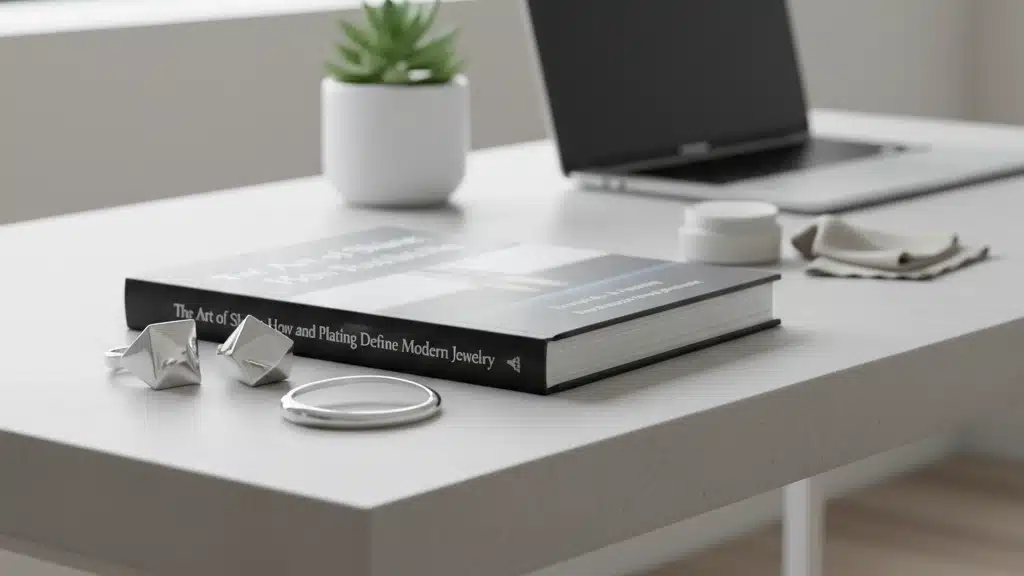
Understanding Wholesale Jewelry Pricing and How It Works
Understanding Wholesale Jewelry Pricing and How It Works When people see a ring that costs $6 wholesale and retails for $59, they often
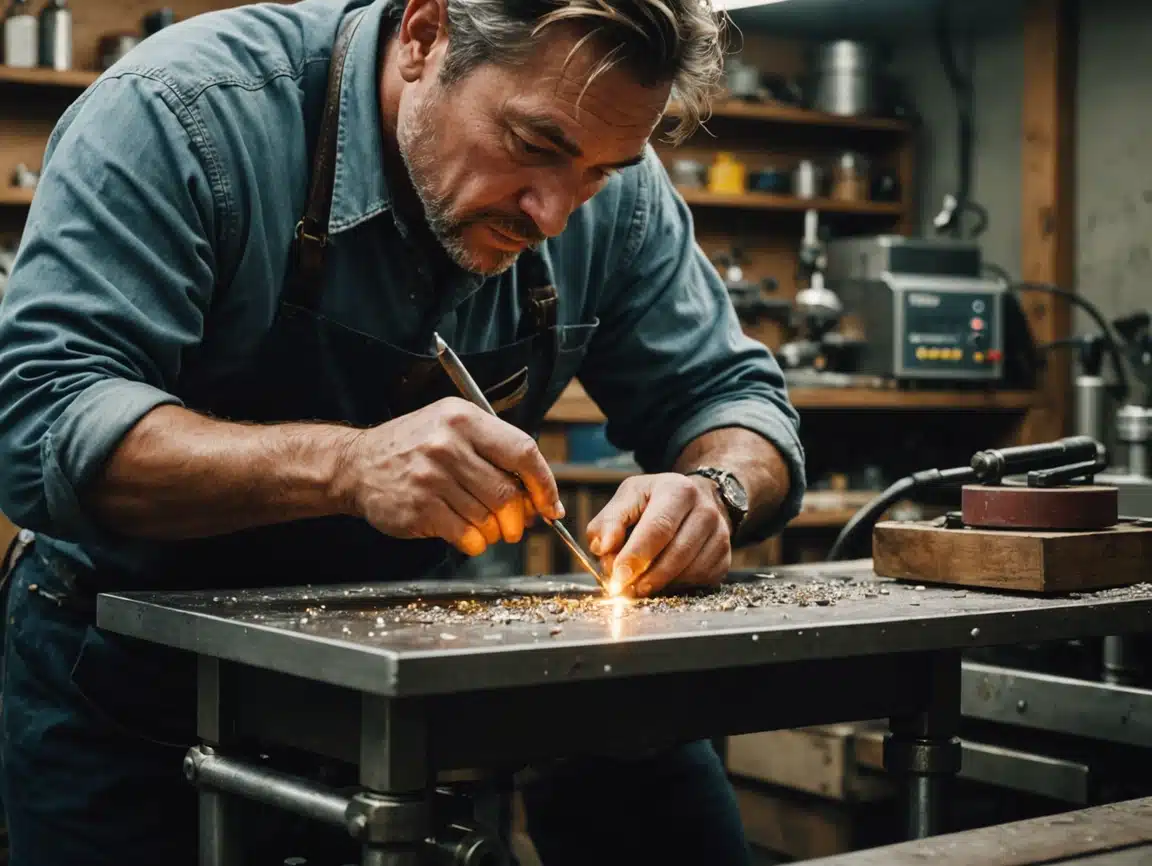
The Art of Shine in Jewelry Polishing and Plating Techniques
Discover how polishing and plating transform modern jewelry with expert techniques for lasting shine and elegant finishes.
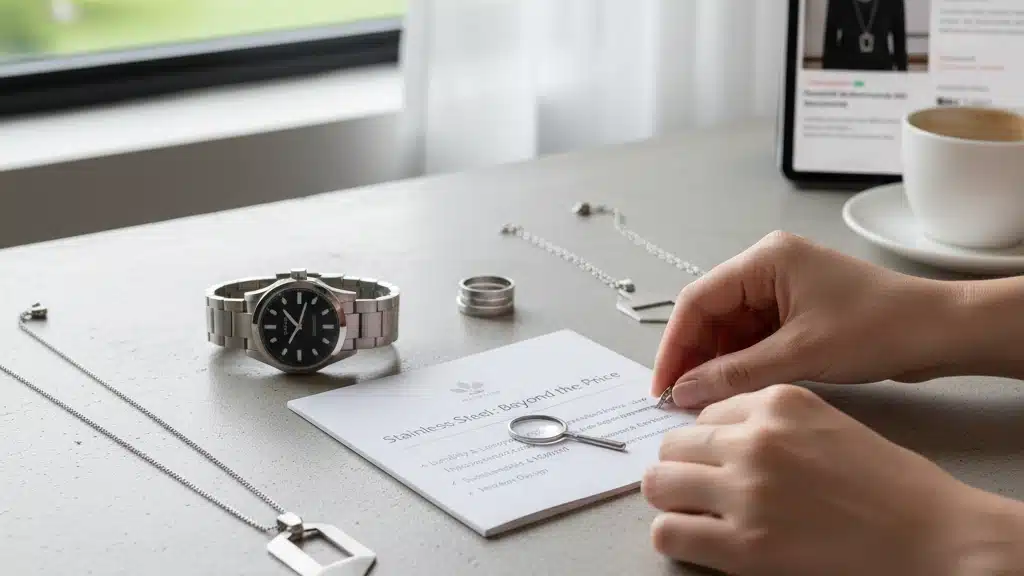
Τι Νοιάζει Πραγματικά τους Αγοραστές Ανοξείδωτου Κοσμήματος Εκτός από την Τιμή
Τι πραγματικά νοιάζει τους αγοραστές ατσάλινων κοσμημάτων πέρα από την τιμή ανθεκτικότητα υποαλλεργικά υλικά και μοντέρνο στυλ.
